In the first glimpse of new-generation hardware from NI, the company is offering an MK3 revision of its Traktor X1 controller. The X1 line has always found some fans at for its simplicity and compact size. This version adds additional controls, lots of aesthetic touches, and functionality that incorporates what had previously required user hacks. So what can it do at launch – for Traktor, or even as a MIDI controller for other software?
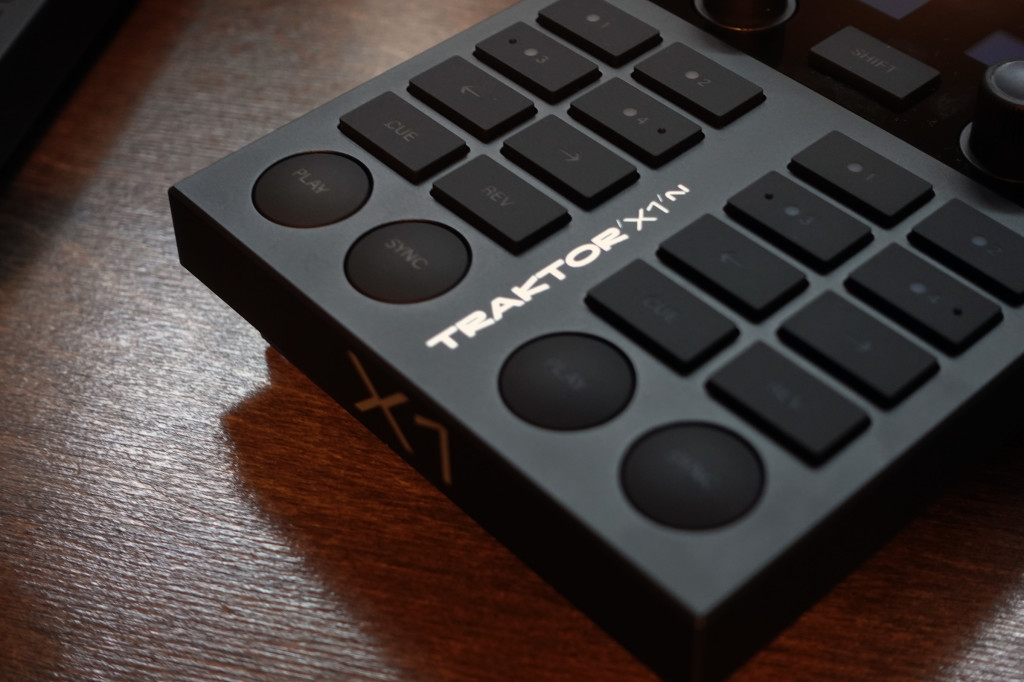
Features and layout
If you know the X1 series, this is still an X1 – bringing together user-favored features from both the MK1 and MK2. It’s intended as an FX/EQ/cue/loop section, now with basic mixing, too. It’s primarily intended as a Traktor controller, but a two-key combo transforms it into a generic MIDI controller. It’s also now driverless – so it’ll work with anything in MIDI mode. For Traktor, you’ll need Traktor Pro 3.10 or later for integration.
Gone from the old X1 MK2 is the touch strip – which means you also don’t have its control over pitch bend / track seek / etc. Other than that, though, the MK2 looks pretty crude by comparison to the much nicer MK3, in its controls, knob caps, and segmented number displays.
On the MK3, you get various improvements to the hardware:
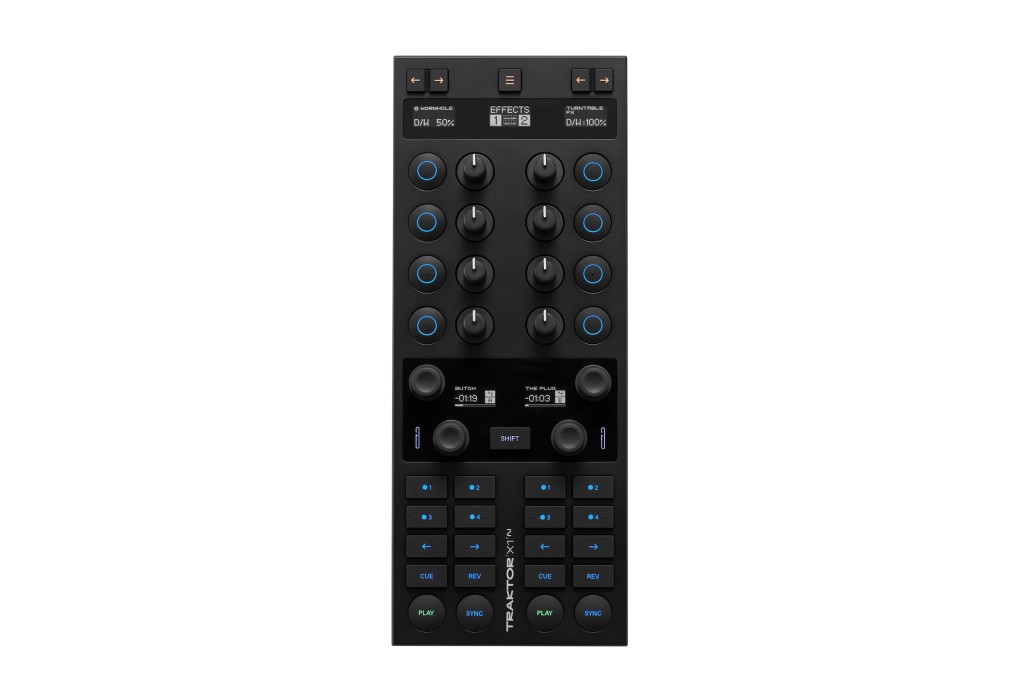
- An additional row of dedicated controls, which means less shift-key functions (though they’ve also changed around some of the control mappings)
- Play and sync buttons are now adjusted
- Browse encoders are back from the MK1 (dropped on the MK2)
- Five OLED displays, for track progress / name / loop size / effect parameters
- Lighting feedback (on the controls) which indicates loops and tracks nearing their end, for instance
- Ambient lighting on the underside with customization
- 3-port USB hub
It also includes a Traktor DJ Pro license, so this makes a great starter DJ solution.
All of the connections are USB A/B. That they didn’t include USB-C on brand-new hardware is a surprise, and even suggests this design may have been on the shelf for a while. On the other hand, it means with one adapter or a USB B – to C cable, the X1 can be an adapter for all your other USB-A/B devices.
Despite dropping the touch strip, most stuff is where it was. They’ve moved the FX assignment buttons to the top. Those are now marked with left and right arrows, which at first might lead you to think they’re for navigation, but that location is a better position. Play and sync buttons are also separated, which is a big improvement.
The X1 still excels at what it did originally – it’s great for adding hands-on FX and EQ controls and quickly setting loops. Looping with the encoders is precise enough, so I expect while someone will miss the touch strip, a lot of folks won’t. You can set decks to A or B and C or D – so it also can be an extra deck controller, depending on your setup.
Looping is so much fun, actually, that I find I play differently on this than I do on other gear. Quite frankly, I think it’s more fun to loop on the lowly X1 than it is on a CDJ3000 (sorry, sorry – ducks!).
The other big improvement is that there’s a built in mix mode, which you can access right from the unit. With sync enabled, you can do an entire DJ set on the X1 MK3 – handy for an afterparty or a visit to a friend (provided you have a computer, of course). I believe in that use case, especially because not all of your friends are going to own CDJs. (Cough.)
That mix mode was previously available with custom mappings, but having it built in is far easier to manage and means you can swap between FX and mix easily.
And as you’ll see in the shots, there are also a lot of fun new design elements.
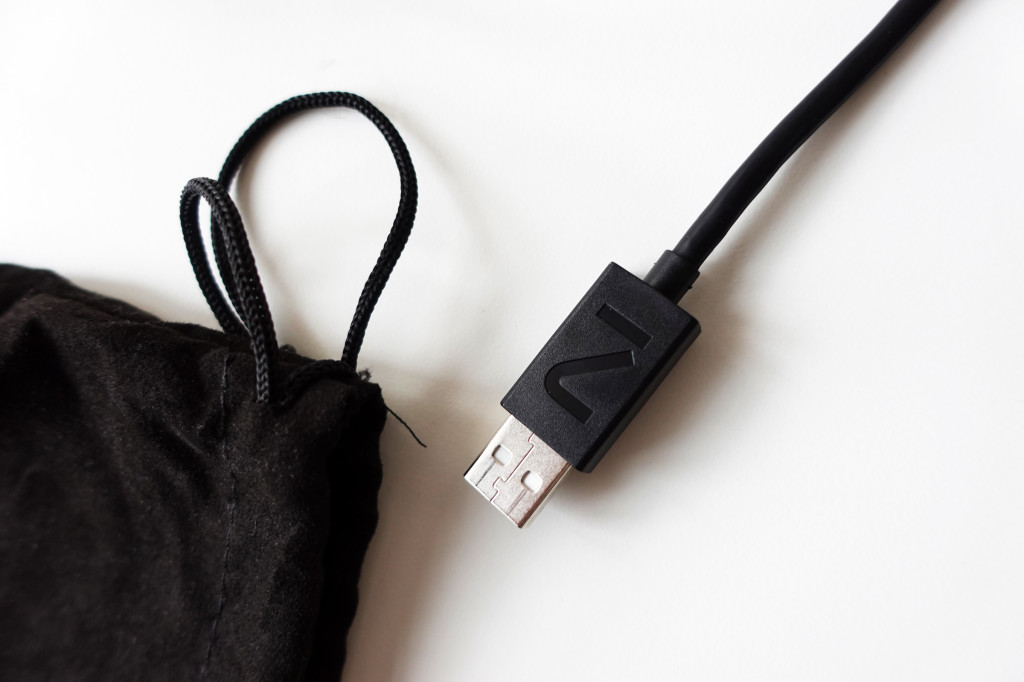
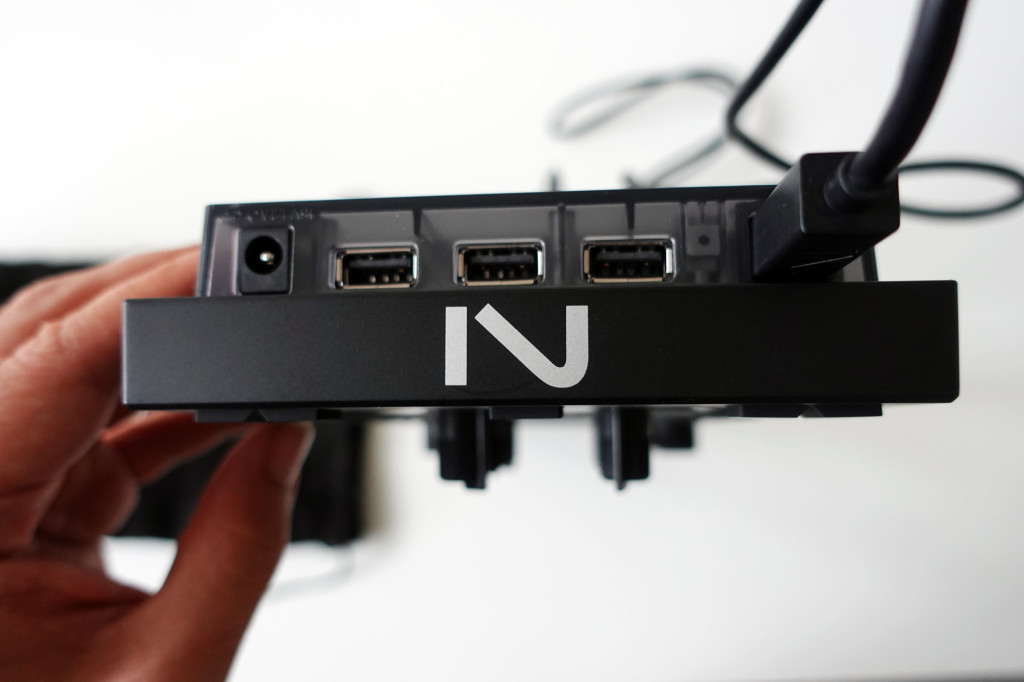
Customization and MIDI operation
There’s clearly a ton of potential on this hardware – tantalizingly teased in the elaborate animations that scroll when you power up the unit. (Animated waveforms, for instance!)
In its launch state, though, the functionality is pretty simple – if useful. On boot, you can choose which FX slots and decks to match right on the unit . In Traktor’s preferences, you can customize colors and lighting, and details like the elapsed time on the display. (See screenshot.)
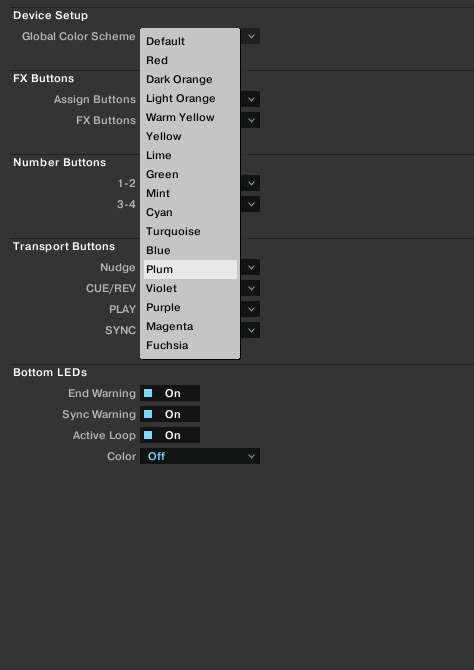
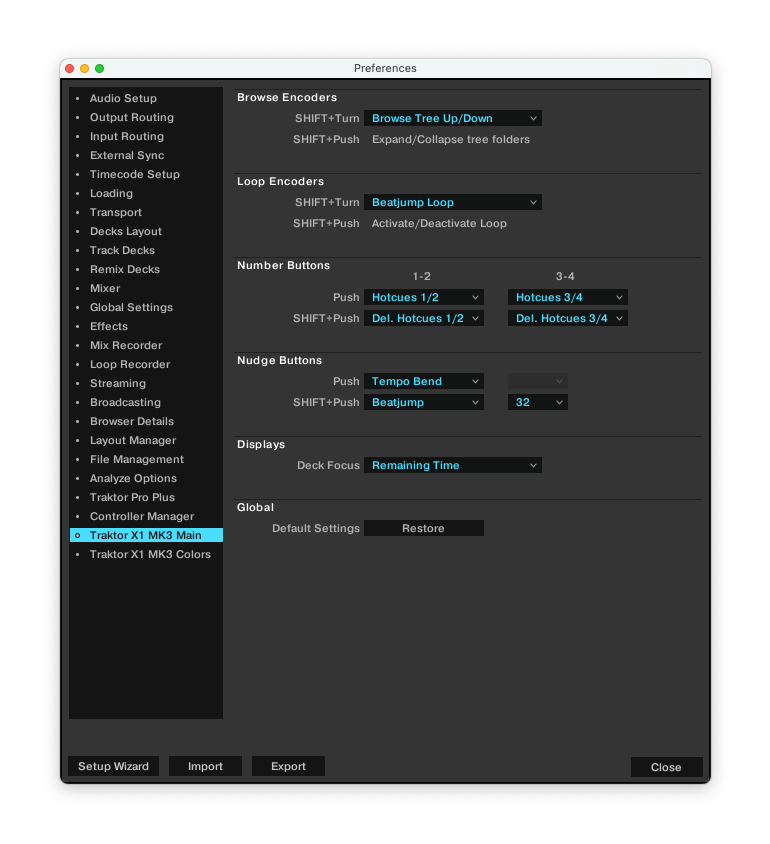
Note in the second screenshot that you can customize assignment for the number button triggers, nudge, shift functionality, and so on. And you can do all of this customization easily in the dialog, a lot more easily than other DJ solutions – even in some cases from NI.
MIDI functionality is also straightforward in generic operation. Every button apart from shift is MIDI mapped, which is good – and now since no drivers are required, that’ll be the case if you plug into an iPad or a Linux-based Raspberry Pi as well as your Mac or PC. As with other NI gear, you can swap into MIDI mode from the usual “works-with-NI’s-own-software” mode with two keypresses. (There’s a knowledge base article that covers the exact combo on each hardware unit.)
The mappings – everything on the left-hand side is MIDI channel 1, and the right-hand side channel 2:
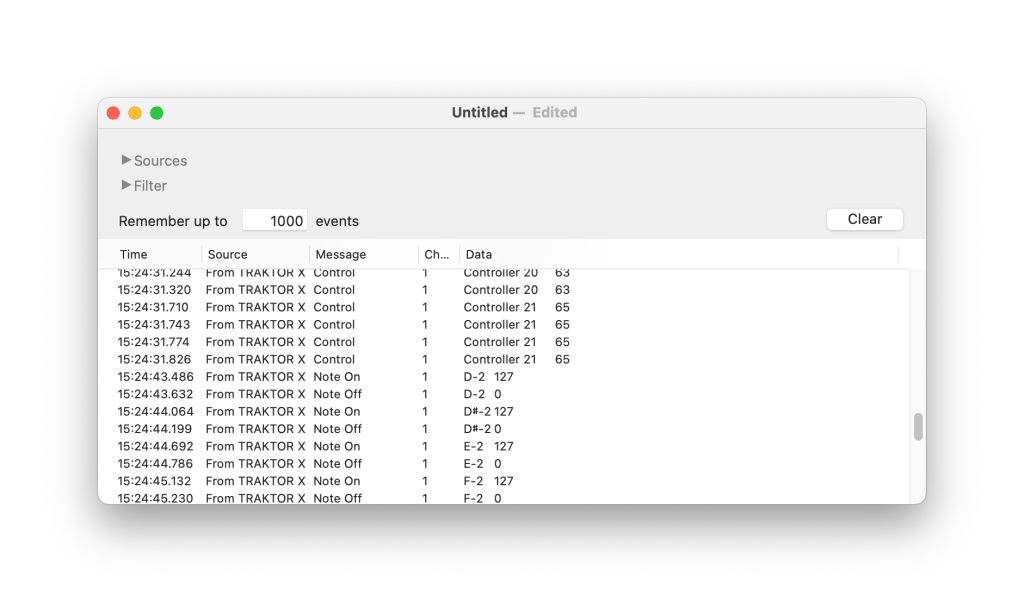
- FX assign – note on/off (C-2/C#2)
- Four knobs – MIDI CC coarse, GP 1-4
- Four encoders – CC 21-22, i.e., increment and decrement
- Buttons at the bottom – note on/note off (scaled from D-2 to B-2 )
Note that you can use these same mappings to set LED state to on or off. With a little bit of work, that could make this a powerful controller. Unfortunately, you can’t set RGB value for color feedback as you can with NI’s pad controllers; they’re locked to blue to indicate MIDI mode.
The controls feel great, and this is a convenient layout and form factor. But you are locked now to those MIDI mapping defaults. The former Controller Editor apparently isn’t used at all, which seems due for an update, but that also means it seems you’re restricted to what the hardware itself is pre-configured to do. It’s also a shame you can’t page through different mappings using those (FX assignment) arrow keys at the top. That still means that Faderfox and Allen & Heath K2 reign supreme for compact custom MIDI control, as well as some interesting Traktor maps. (And seriously, Novation, where’s our MK2 Launch Control / Launch Control XL?) Update: Oh, I forgot about the Akai AMX, which also works as an all-in-one solution with this map on djtechtools. (Thanks, Pedro!)
Short of more details, it’s hard to recommend the X1 MK3 yet as a multi-purpose controller, but we’ll have to see if more details are forthcoming.
Now, yes, yes, I know – the target audience here is Traktor users. But it’s still relevant to ask whether you’re buying a unitasker here or not.
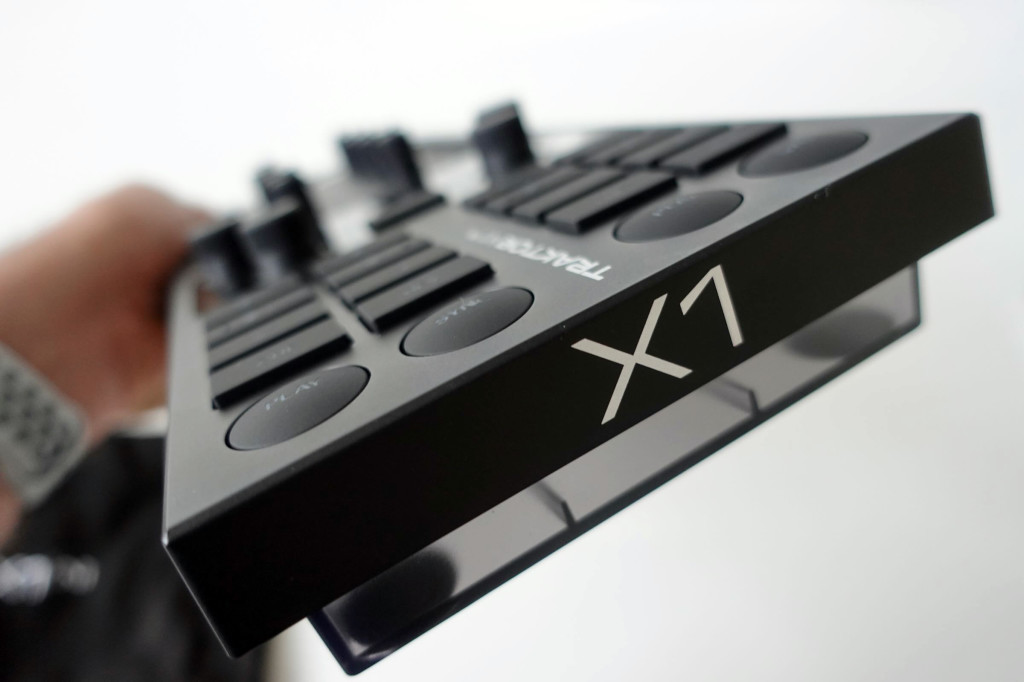
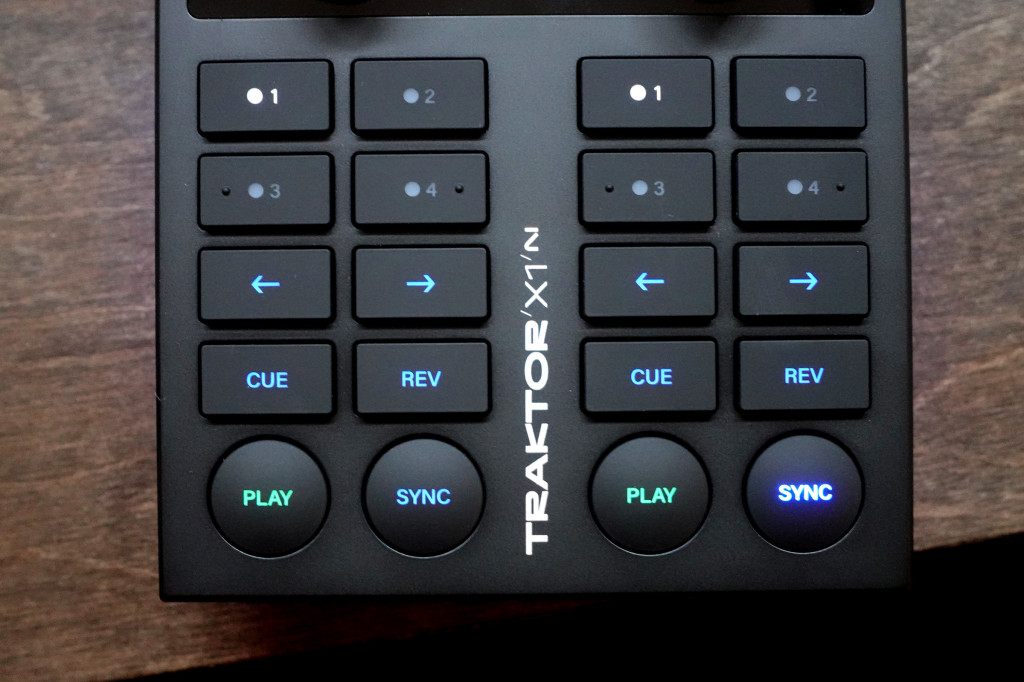
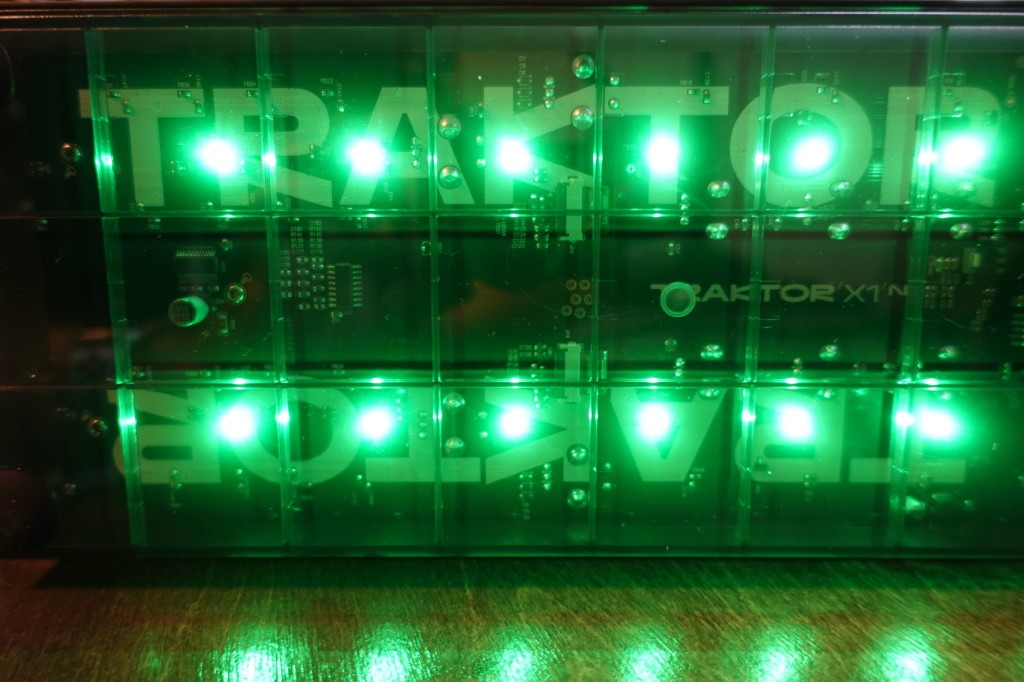
Impressions
I’ve had a test unit for a few days, and at the very least, there are some encouraging signs that NI’s recent rebranding/look will result in some nice-looking industrial design. Everything on the X1 feels solid and looks slick enough, from the satisfyingly crisp and large buttons and triggers to the knobs. The RGB lighting is actually subtle in practice, not gaming-accessory garish. (There’s a power adapter included in the box, which you’ll need to use the USB hub.)
The X1 does look like it’s got some potential, especially for just adding some additional controls to a compact setup, or using on the go for an ultra-compact DJ rig. We just have to see how the control and customization options evolve. For now, I was happy with those two defaults (FX/EQ and mixing) and the handful of customization additions in the dialogs.
For advanced users, it feels a little like NI missed an opportunity to take on Allen & Heath’s ultra-compact Xone K2. Sure, the K2 is slightly more expensive, but it does give you some things that are missing here – a built-in audio interface, faders, 3 layers of MIDI controls, and a bunch of controls. That’s made the K2 popular not only among DJs, but also live VJs. And now that the X1 is getting close to the K2 price, well… (the A&H even has a cute case). I had high hopes for the X1 as a VJ controller or extra Ableton Live controller, but it’s not quite ready to recommend yet outside Traktor.
I’ll be curious if we get a new Z1, since there’s no audio interface onboard on the X1 for truly mobile rigs – you’ll still need an interface if you want headphone cueing, etc. With that A&H K2 in mind, I would have loved to see Traktor combine the X1 and Z1, especially as Traktor’s niche for a lot of us is a DJ rig at home or mobile, when we switch to CDJs for club gigs. Imagine the ease of the X1 MK3, but with onboard audio and faders so you could carry just that device.
Anyway, enough dreaming. For looping, FX controls and compact mixing, and out-of-the-box operation with Traktor, the X1 MK3 is a worthy upgrade, objectively improving on the design and feel of its predecessors, and easy and useful gear.
And yeah, I’ll still try to make a good Resolume and Ableton Live templates for it – if they’re halfway decent, I’ll share.
Traktor X1 is $299, preorders now. Ships September 20.
Preorders are available from retailers:
If you buy something from a CDM link, we may earn a commission.
Traktor X1 MK3 DJ Controller @ Perfect Circuit
Traktor Kontrol X1 MK3 @ Sweetwater